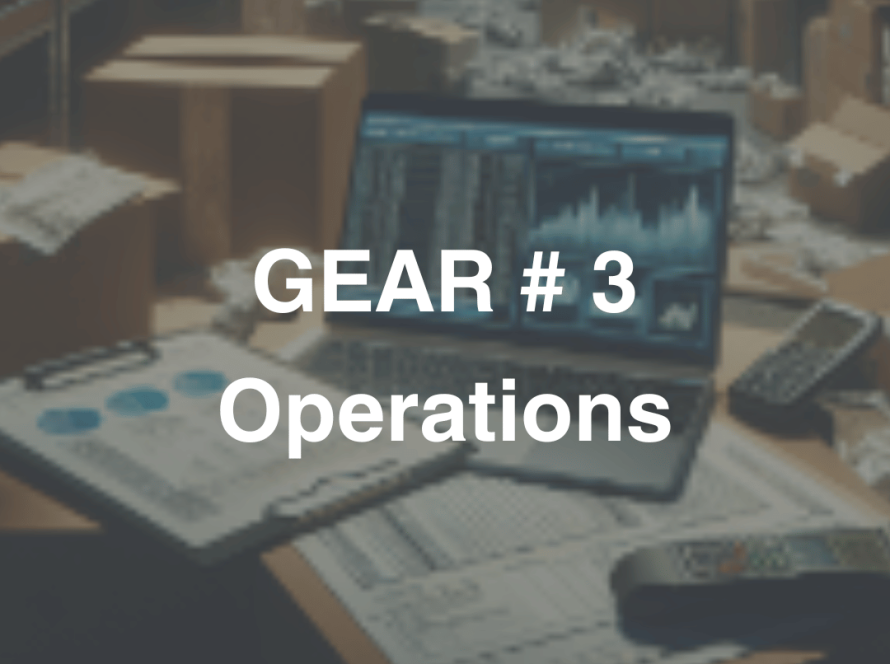Dashboard KPI Software: Top Benefits in 2025!
Dashboard KPI software is a powerful tool for businesses of all sizes, designed to simplify performance tracking and advance decision-making through intuitive data visualization. If you’re looking to harness the power of your data without wading through complexity, here’s why it’s essential:
- KPI Dashboards provide a snapshot of business health, using interactive charts and graphs.
- Data Visualization transforms raw numbers into insights, helping to spot trends and track performance seamlessly.
- Performance Tracking ensures you never lose sight of your goals, allowing timely interventions and strategic growth.
For busy small business owners, these insights are crucial in navigating a competitive landscape.
To see real-world examples and features that make KPI software indispensable, continue reading. I’m Russell Rosario, and as a co-founder at Profit Leap, I’ve dedicated my career to making dashboard kpi software accessible to small businesses, empowering leaders to leverage data for success.

Dashboard kpi software glossary:
– free kpi dashboard software
– kpi and dashboard
– kpi dashboard open source software
Understanding Dashboard KPI Software
Dashboard KPI software takes the guesswork out of understanding your business performance. Let’s break down how it works and why it’s a game-changer.
KPI Analytics
KPI analytics is like having a magnifying glass for your business data. It digs deep into the numbers to show you what’s working and what isn’t. This involves analyzing the metrics behind your Key Performance Indicators (KPIs) to uncover trends, patterns, and anomalies.
For example, with the right software, you can connect data from multiple sources and visualize it in real-time. This means you can react faster to changes and motivate your team by making progress against targets visible.
Data Sources
The power of dashboard KPI software lies in its ability to pull data from multiple sources. Whether it’s sales figures, marketing metrics, or customer feedback, the software consolidates this information into one place.
Imagine a hospital group using an executive KPI dashboard to monitor goals and objectives. They’d pull data from clinical records, patient feedback, and operational metrics to get a comprehensive view.
Real-Time Monitoring
Real-time monitoring means you can see what’s happening in your business right now. This is crucial for making timely decisions and staying ahead of the competition.
With real-time dashboards and embedded analytics, you can uncover trends and patterns as they emerge, rather than after the fact.
Real-time data isn’t just about speed; it’s about accuracy too. It ensures that the insights you’re basing decisions on are up-to-date, leading to more effective strategies.

By integrating these elements, dashboard KPI software provides a unified view of your business performance. This empowers you to make informed, data-driven decisions that drive growth.
Key Features to Look for in KPI Software
When choosing dashboard KPI software, it’s crucial to focus on features that will truly benefit your business. Here are three key features to consider:
Interactive Dashboards
Interactive dashboards are the heart of KPI software. They turn complex data into easy-to-understand visuals like charts and graphs. This makes it simple for everyone on your team to grasp what’s happening in real-time.
Why is this important? Imagine a marketing manager who needs to track campaign performance. An interactive dashboard lets them quickly see which strategies are working and which aren’t. This means faster adjustments and better results.
Data Modeling
Data modeling is a powerful feature that helps you make sense of your data. It allows you to create a structured framework for analyzing information. This is especially useful for businesses with vast amounts of data from different sources.
For instance, a retail company could use data modeling to predict sales trends based on historical data. This insight can guide inventory decisions, ensuring shelves are stocked with the right products at the right time.
AI Capabilities
AI capabilities take your dashboard KPI software to the next level. With AI, the software can analyze data and provide predictive insights. This means it doesn’t just show you what’s happening now but also what might happen in the future.
Consider a finance department using AI to forecast cash flow. By predicting potential shortfalls, they can take proactive measures to maintain financial stability. AI can also help identify patterns that might be missed by human analysts.

These features—interactive dashboards, data modeling, and AI capabilities—are essential for maximizing the value of your KPI software. They ensure you not only track performance but also gain actionable insights to drive your business forward.
Top Benefits of Using Dashboard KPI Software
When it comes to managing your business, dashboard KPI software offers several key benefits that can transform how you operate. Let’s explore the top advantages:
Data-Driven Decisions
At the core of any successful business is the ability to make informed decisions. Dashboard KPI software provides real-time data that helps you understand what’s working and what’s not. Picture a sales team trying to hit their quarterly targets. With access to up-to-date sales metrics, they can adjust their strategies on the fly to focus on high-performing products or regions.
This kind of data-driven decision-making ensures that your business actions are based on facts, not just hunches.
Performance Insights
Dashboard KPI software offers a window into your business’s performance. By consolidating data from different areas—like marketing, sales, and operations—into one place, you gain a comprehensive view of how your company is doing.
For example, a company might notice a dip in customer satisfaction scores through their dashboard. This insight prompts them to investigate and address the root cause, ultimately improving their service and retaining customers.
Performance insights like these are invaluable for spotting trends and identifying areas for improvement.
Efficiency
Time is money, and dashboard KPI software helps you save both by streamlining how you track and analyze data. Instead of manually compiling reports from various sources, the software automates this process, giving you more time to focus on strategic tasks.
Imagine a project manager who used to spend hours each week preparing status reports. With an automated dashboard, they can now access all the necessary information with just a few clicks, freeing up time to focus on project execution.
This boost in efficiency means your team can work smarter, not harder, leading to better outcomes and increased productivity.
By leveraging these benefits, dashboard KPI software empowers your business to act swiftly and strategically, ensuring you stay ahead in a competitive market.
How to Choose the Right Dashboard KPI Software
Choosing the right dashboard KPI software can feel overwhelming, but focusing on a few key areas can simplify the process. Here’s how to make the best choice for your business:
Customization
When selecting KPI software, customization is crucial. Every business has unique needs, and your software should adapt to those. Look for tools that allow you to tailor dashboards to fit your specific goals and industry requirements.
Imagine a retail company that wants to track daily sales, inventory levels, and customer feedback. A customizable dashboard lets them prioritize these metrics, ensuring their team has the most relevant information at their fingertips.
User-Friendly
A user-friendly interface is essential for maximizing the value of your KPI software. If the tool is too complex, your team might struggle to use it effectively.
Consider a small business owner with limited technical skills. They need software that’s intuitive and easy to steer, so they can quickly access insights without a steep learning curve. Look for features like drag-and-drop functionality and pre-built templates to make setup and use straightforward.
Integration Options
Your KPI software should seamlessly integrate with the tools your business already uses. This ensures you have access to all necessary data without manual input, saving time and reducing errors.
For example, a marketing team might use various platforms for social media, email, and web analytics. A KPI tool that integrates with these platforms can consolidate data into one dashboard, providing a comprehensive view of their marketing performance.
By focusing on customization, user-friendliness, and integration options, you can select dashboard KPI software that aligns with your business needs, making performance tracking more efficient and insightful.
Frequently Asked Questions about Dashboard KPI Software
What is a KPI Dashboard?
A KPI dashboard is a visual tool that displays a company’s key performance indicators (KPIs) in real-time. Think of it like the dashboard in your car: it gives you essential information at a glance to keep your business running smoothly. These dashboards use charts, graphs, and other visual elements to make complex data easy to understand, providing a quick overview of business performance.
Visual feedback is a major feature of these dashboards. By making data visually accessible, they help teams track performance and make informed decisions quickly. This is crucial for businesses that need to stay agile in a environment.
How Do KPI Dashboards Improve Business Performance?
KPI dashboards improve business performance by offering real-time insights into critical metrics. This immediacy allows businesses to make data-driven decisions promptly, improving efficiency and effectiveness.
For instance, consider a sales team that monitors their sales pipeline through a KPI dashboard. They can quickly identify trends, spot potential issues, and react faster to opportunities. This ability to see what’s happening in real-time helps prevent small problems from becoming big ones and keeps the team aligned with their goals.
Moreover, KPI dashboards streamline decision-making by presenting data in a clear and concise manner. When everyone has access to the same up-to-date information, it fosters better communication and collaboration across teams.
What Are the Best Practices for Designing a KPI Dashboard?
Designing an effective KPI dashboard requires careful consideration of several factors:
-
Focus on Relevant KPIs: Limit the dashboard to 5-10 KPIs that are most relevant to your business objectives. This keeps the dashboard clear and actionable, preventing information overload.
-
Prioritize Data Visualization: Use the right visualizations, such as bar charts or line graphs, to represent your data clearly. This makes it easier for users to grasp complex information quickly.
-
Ensure User Engagement: Regularly seek feedback from users who interact with the dashboard. Their insights can help optimize the design and functionality, making the tool more useful for everyone.
-
Provide Context: Include explanatory notes or definitions to help users understand the data. KPIs without context can be misleading and lead to incorrect conclusions.
By following these best practices, you can create KPI dashboards that not only convey important information but also improve user engagement and support better business outcomes.
Conclusion
In today’s business environment, having a clear and immediate view of your key performance indicators is essential. At Profit Leap, we specialize in changing complex datasets into custom dashboards that provide actionable insights custom to your unique business needs.
Our approach is not just about making data look good; it’s about making data work for you. Our dashboards are highly interactive, allowing you to dive deep into your metrics and understand the nuances of your business performance. This is where our AI business advisor, Huxley, comes into play. Huxley leverages advanced AI capabilities to offer predictive analytics and intelligent recommendations, helping you anticipate future trends and make proactive decisions.
Imagine freeing up hours previously spent on manual data analysis. With Huxley, you’re not just reacting to data; you’re actively shaping your business strategy with confidence. This proactive approach can turn challenges into opportunities, just as it did for Michael Solis from TransRide, who saw a turnaround in his business after implementing our solutions.
By choosing Profit Leap, you’re not just getting a dashboard; you’re gaining a partner in business intelligence. We work closely with you to ensure our solutions align with your evolving needs, helping you harness the full potential of your data.
Ready to revolutionize your business intelligence strategy? Find how our custom dashboards can drive growth and innovation for your business. Let’s harness the power of your data together.


